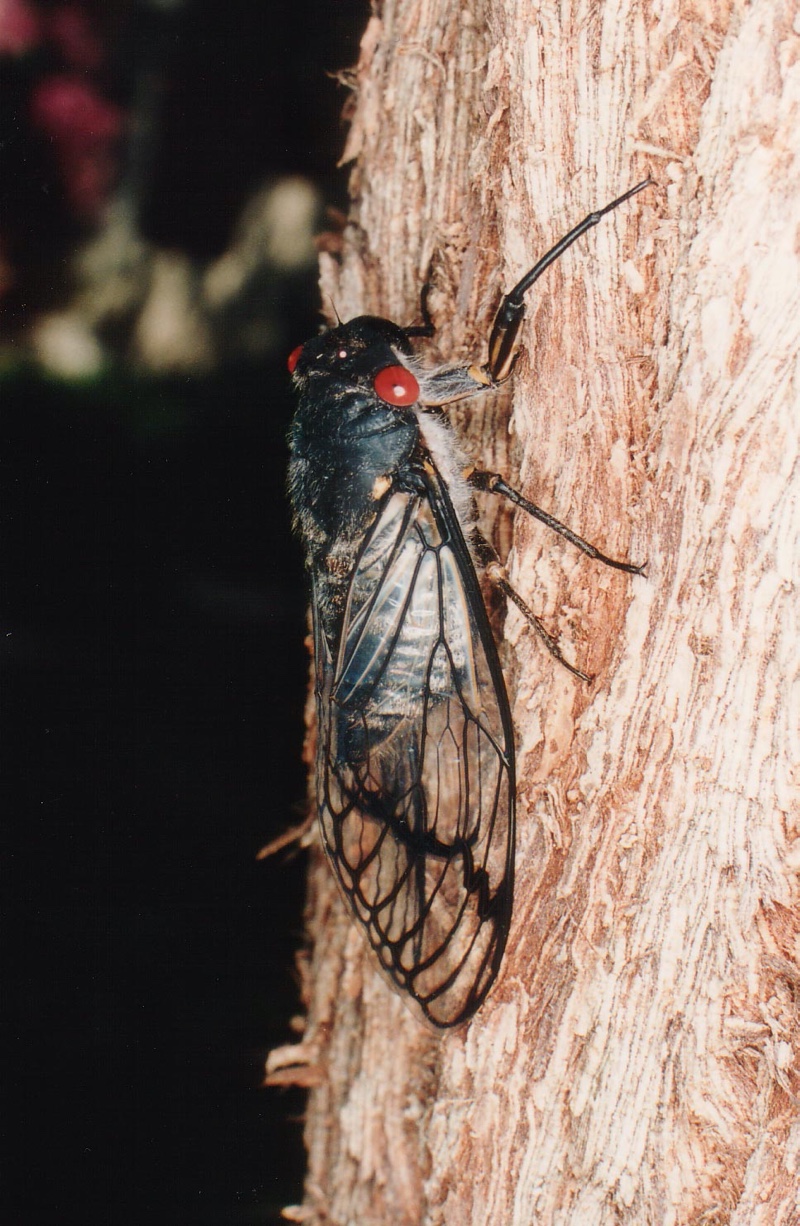Macrosemia umbrata is a cicada found in China, Burma, India, Nepal, Thailand, and likely adjacent nations.
Photo by Raghu Ananth taken in Arunachal Pradesh, India.

This cicada is also known as Macrosemia chantrainei2. Here is a photo by Michel Chantraine:

Same insect?
Description (from when the cicada was known as Cosmopsaltria umbrata):
Male. Head and thorax above obscure olivaceous. Head with the lateral margins to the front, the area of the ocelli, and some irregular spots on each lateral area of the vertex black; eyes ochraceous. Pronotum with two u-regular central black fasciae, ampliated at base and apex, and with two at each lateral margin, the posterior margin with its edge narrowly black and a black spot near lateral angles. Mesonotum with two central blackish obconical spots, between which a narrow l)lack fascia extends to the base, and a black spot in front of each anterior angle of the basal cruciform elevation. Abdomen above largely suffused with dull black shadings. Body beneath olivaceous; a central fascia to face, the anterior margin between face and eyes, inner margins and apices of femora, and the tibia more or less blackish. Opercula olivaceous, their apices and a spot near base blackish. Abdomen beneath olivaceous, largely suffused with black shadings.
Tegmina and wings pale hyaline, the venation fuscous; tegmina with the base and costal membrane fuscous, the transverse veins at the bases of the second, third, fifth, and seventh apical areas and the apices of the longitudinal veins of apical areas infuscated.
The rostrum has the apex pitchy and just passing the posterior coxa; the opercula are somewhat narrowed, concavely sinuated on each side near the base, and narrowed towards apices, which are obtusely and reach the fourth abdominal segment.
Long. excl. tegm. 46 millim. Exp. tegm. 120 millim.
Scientific classification:
Family: Cicadidae
Subfamily: Cicadinae
Tribe: Dundubiini
SubTribe: Macrosemiina
Genus: Macrosemia
Species: Macrosemia umbrata (Distant, 1888)
For more information about this cicada, visit Cicadas of India.
References:
- The description and location information comes from A Monograph of Oriental Cicadas by W. L. Distant. 1889-1892. Read it on the Biodiversity Heritage Library website.
- Species name information comes from Allen Sanborn’s Catalogue of the Cicadoidea (Hemiptera: Auchenorrhyncha).














